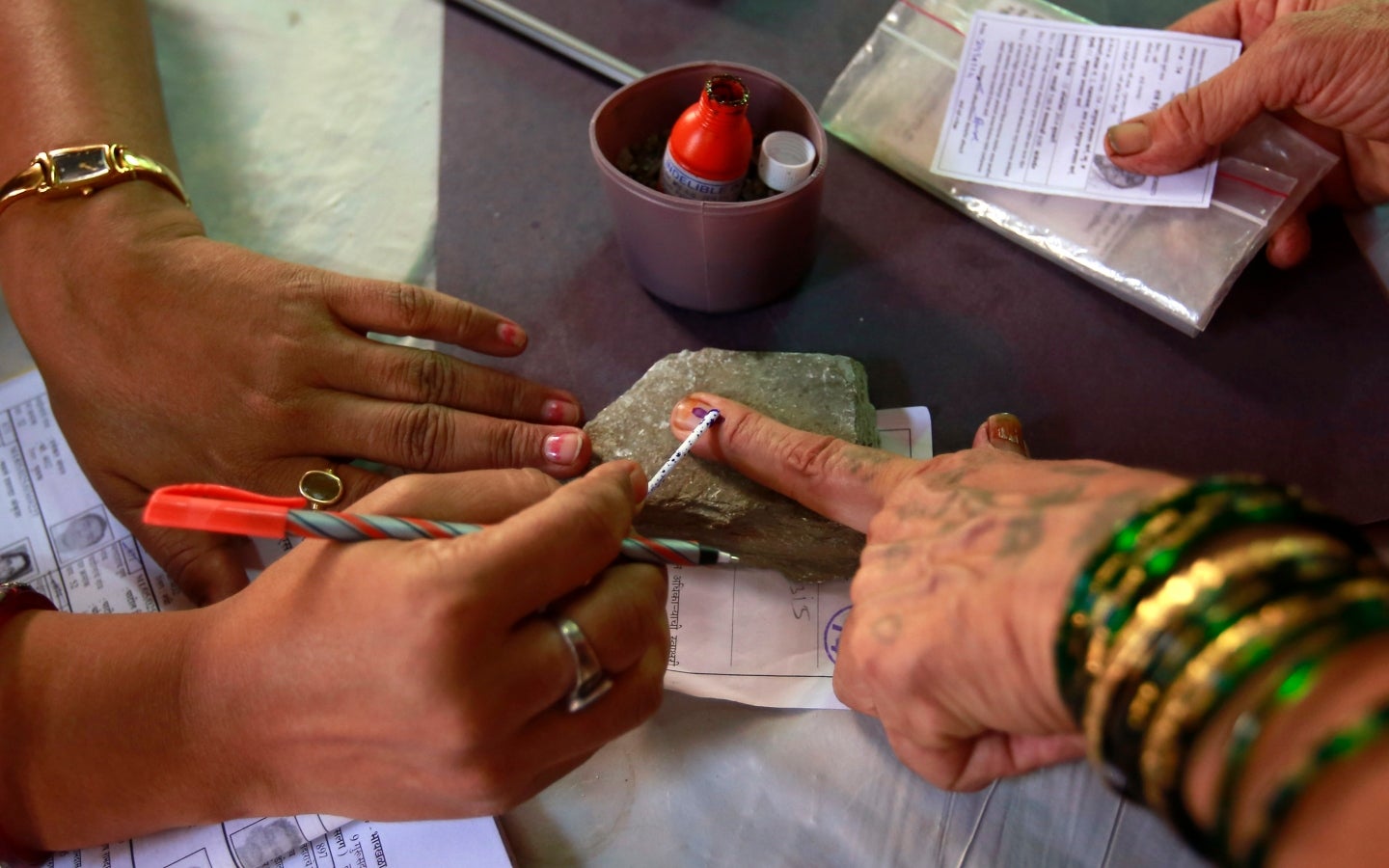India declares seven-phase national elections to be held in April and May
The election commission of India (ECI) today (March 10) declared dates for a seven-phase national elections.


The election commission of India (ECI) today (March 10) declared dates for a seven-phase national elections.
The polls to form the 17th Lok Sabha, the lower house of parliament, will be held on April 11, 18, 23, and 29, and May 06, 12, and 19, the ECI has said. The results of the elections will be declared on May 23, Sunil Arora, the chief election commissioner, said at a media briefing in New Delhi, the national capital.
Of the 545 seats in all, two are reserved for the Anglo-Indian community, to which the president of the country nominates members.
The number of registered voters stood at around 900 million, Arora said. This is around 84.3 million more than in the 2014 elections, he said, adding that there are around 15 million new voters in the 18-19 years age group this time.
There will be approximately one million voting booths during these elections and around 11 million personnel who will be part of the electoral machinery.
“VVPATs (voter verifiable paper audit trail) will accompany EVMs (electoral voting machines) in all polling booths this election,” Arora said, referring to the EC’s chosen method of providing feedback to voters.
The announcement of the election dates also immediately brings into effect the ECI’s model code of conduct. essentially rendering the Modi government lame duck. This code is a set of guidelines and rules to ensure free and fair conduct of elections and the campaigning preceding it. The code will remain effective till the day the results are announced. These guidelines includes a bar on the use of religious and caste sentiments to seek votes and announcement of fresh projects and schemes by the government.
“Any violation will be dealt with in the strictest manner,” Arora said.
Whichever party—or coalition of parties—manages to cross the half-way mark of 272 seats will elect the prime minister of India. This will have to happen by the first week of June as the five-year term of the current government, led by Narendra Modi, ends on June 03, 2019.
In the 2014 election, the Bharatiya Janata Party (BJP)-led National Democratic Alliance (NDA) stormed to power, with the Hindu nationalist outfit alone winning 282 Lok Sabha seats. This was the first time in almost three decades that any single party had got a clear parliamentary majority in India. That election ended a decade-long rule by the Indian National Congress-led United Progressive Alliance government. The Congress party’s tally was reduced to a historic low of 44 from 206 in the 15th Lok Sabha (2009-2014).
Along with the Lok Sabha polls, a bunch of states would also elect their respective legislative assemblies in April-May this year. These states are Andhra Pradesh, Arunachal Pradesh, Odisha, Sikkim. Apart from these, by-elections to 34 legislative constituencies in other states will also be held simultaneously.